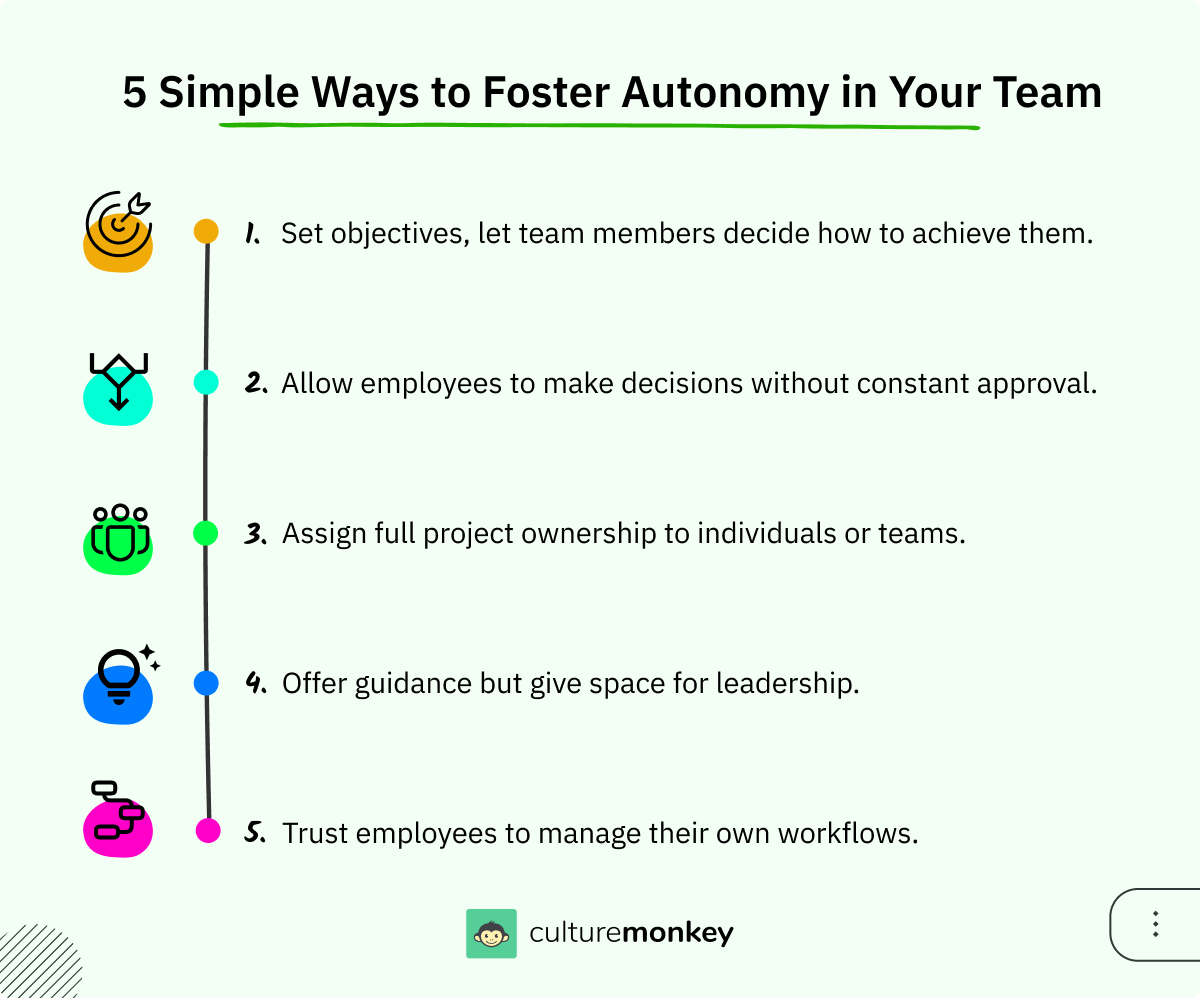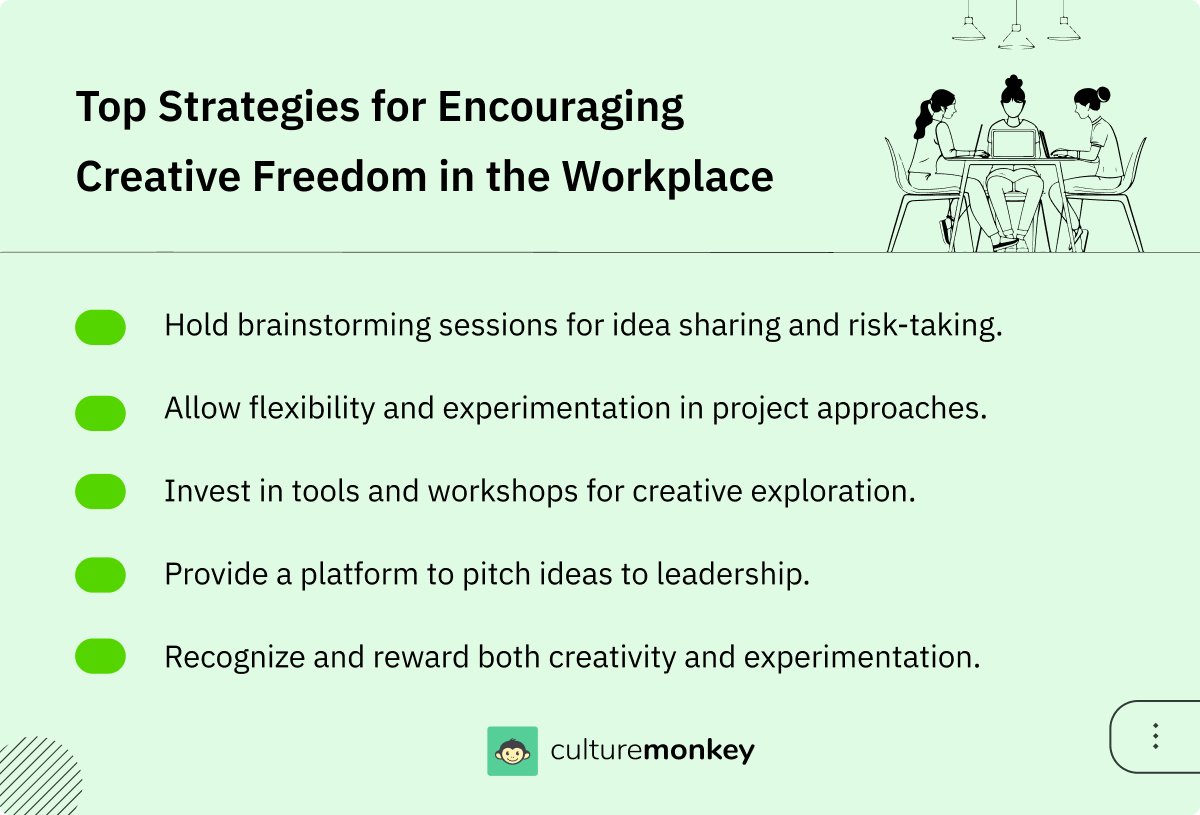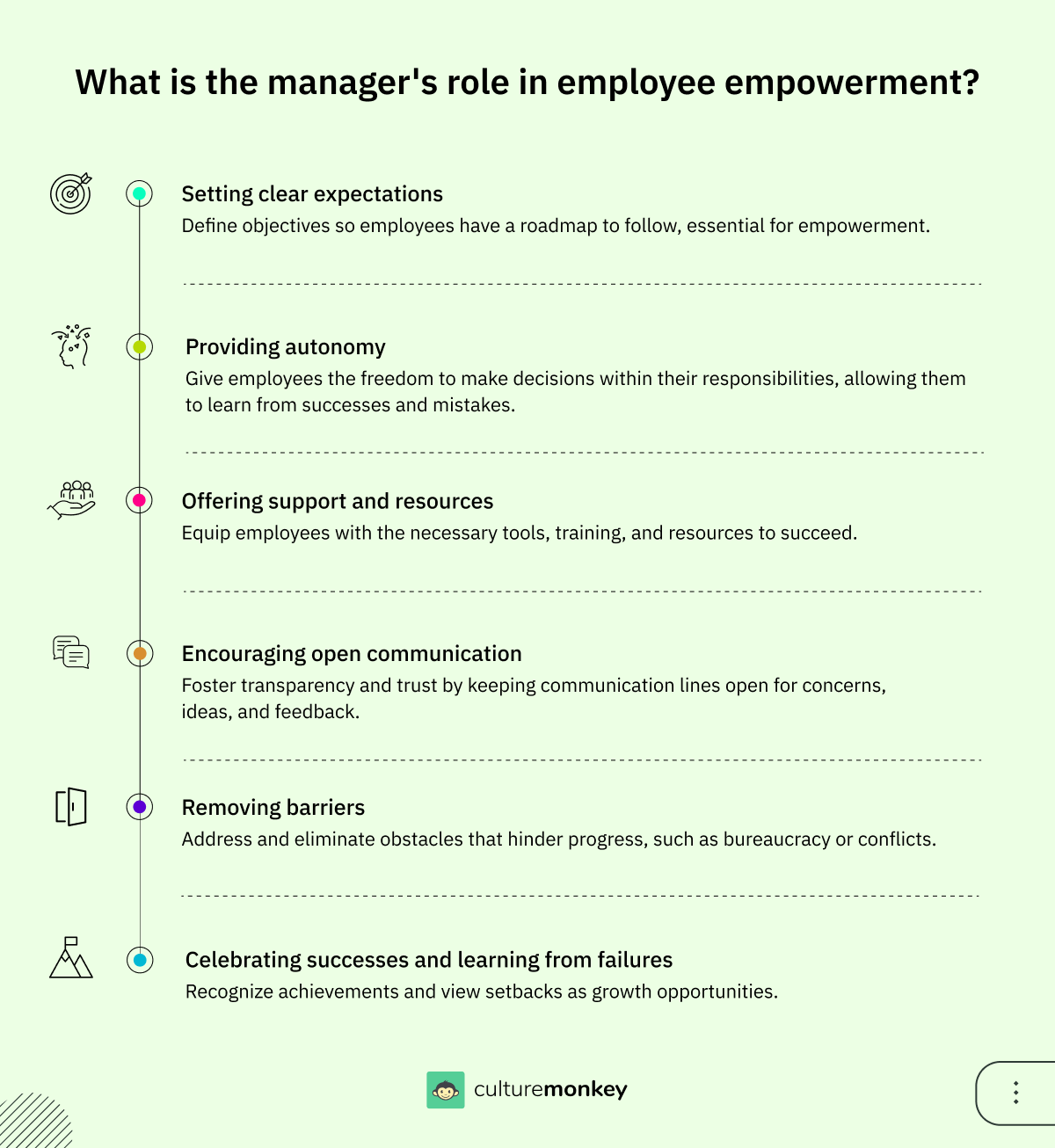What is employee empowerment and how to build an empowered workforce

In 2016, Zappos showed the world what employee empowerment truly looks like. A customer called to return shoes for her mother, who struggled with swollen feet due to a medical condition. During the chat, the Zappos rep discovered they shared a similar condition, sparking a heartfelt connection. But it didn’t end there.
The mother was thrilled when a bouquet of flowers arrived days later, with a note wishing her well. Her daughter, moved by the gesture, wrote about how Zappos “Knocked their socks off.” Zappos went even further, granting VIP accounts to all three women in the family.
What made this possible? Empowerment. When employees have the autonomy to make decisions that delight customers, loyalty goes beyond transactions. This story highlights how empowerment fosters genuine connections, creativity, and exceptional service. Now let’s dive into the meaning of employee empowerment and how to make it work.
Blog Highlights


What is meant by the empowerment of employees?

Employee empowerment involves granting individuals the authority, resources, and trust to make impactful decisions in their roles. More than delegating tasks, it fosters a sense of ownership and accountability within the workforce. This approach enables employees to voice their opinions freely and participate in decision-making, creating a culture of open communication and collaboration.
Empowerment requires providing necessary tools, such as training and mentorship, to ensure employees can execute their ideas effectively. Leadership plays a crucial role in consistently supporting an environment where empowerment is practiced daily.
This framework drives innovation and productivity, as employees who feel valued and trusted approach challenges with creativity and determination. By integrating these elements, organizations cultivate a motivated workforce, achieving enhanced performance and long-term success.



My job as a leader is to make sure that everybody in the company has great opportunities and they feel they are having meaningful impact to the good of society.
How does employee empowerment work?
Employee empowerment is about more than just delegating tasks—it's about giving individuals the authority, resources, and trust to contribute meaningfully. By fostering a culture of open communication and shared accountability, organizations unlock their team's full potential.
- Encouraging employee voice: Empowerment begins by giving employees the freedom to voice their opinions and actively participate in decision-making, fostering a culture of open communication.
- Promoting ownership: By involving employees in decisions, organizations create a sense of ownership and accountability, motivating employees to contribute to company success.

- Providing the right tools: Empowerment requires equipping employees with necessary tools, such as training, technology, and mentorship, enabling them to execute their ideas effectively.
- Leadership support: Strong leadership commitment is essential to creating an environment where empowerment is more than just a concept—it’s a day-to-day reality.
- Fostering innovation and productivity: When employees feel heard and supported, they are more motivated, innovative, and productive, ultimately driving organizational success.
Enablement vs Empowerment vs Engagement

Employee enablement, empowerment, and engagement are often used interchangeably, but each plays a distinct role in shaping workplace performance. Understanding these differences helps organizations optimize their strategies for improving employee productivity and satisfaction.
| Aspect | Enablement | Empowerment | Engagement |
|---|---|---|---|
| Definition | Providing employees with the necessary tools, resources, and support to perform their jobs effectively. | Granting employees autonomy and decision-making power, fostering a sense of ownership and initiative. | The emotional connection employees feel toward their work, driving motivation and commitment. |
| Focus | Focuses on giving employees what they need to do their job successfully (e.g., technology, training). | Emphasizes trust and autonomy, allowing employees to take control of their work and decisions. | Prioritizes emotional and psychological commitment to the organization’s goals and values. |
| Outcome | Increased efficiency and productivity due to the availability of resources and tools. | Innovation and proactive problem-solving as employees feel more ownership of their tasks. | Higher job satisfaction, reduced turnover, and increased loyalty toward the organization. |
| Role of leadership | Leaders play a directive role, providing resources and guidance for task completion. | Leaders act as enablers, trusting employees to take initiative and providing support when necessary. | Leadership fosters a positive culture where employees are emotionally invested in the company’s mission. |
| Example | Offering training and access to advanced software for streamlined work processes. | Allowing employees to make decisions on project execution without seeking constant approval. | Recognizing employees' achievements and aligning their work with the company's values and purpose. |
Why is employee empowerment important?
Employee empowerment is not just a feel-good concept; it holds tremendous importance for both individuals and organizations. Here's why it matters:
- Enhanced productivity and performance: Organizations see that when they empower employees, they are more motivated, engaged, and invested in their work. They take ownership of their tasks, go the extra mile, and consistently strive for excellence. This heightened dedication translates into improved productivity and exceptional employee performance.
- Innovation and creativity: When employees are empowered, they feel comfortable expressing their ideas and perspectives. They are more likely to think outside the box, challenge the status quo, and contribute innovative solutions. By tapping into the collective creativity of their workforce, organizations can gain a competitive edge and stay ahead in an ever-evolving market.
- Employee satisfaction and retention: Empowered employees tend to have higher job satisfaction levels. They feel valued, respected, and recognized for their contributions. This positive work environment fosters loyalty and reduces turnover, as employees are more likely to stay with an organization that appreciates their efforts.
- Adaptability and agility: In today's fast-paced business landscape, organizations need to be agile and adaptable to change. Employees that feel empowered are more resilient and flexible, readily embracing new challenges and opportunities. They can navigate uncertainty with confidence, making them an invaluable asset during times of transformation.
- Enhanced customer satisfaction: Empowered employees are better equipped to meet the needs and expectations of customers. With the freedom to make decisions and take action, they can respond more effectively to customer inquiries, resolve issues promptly, and provide personalized solutions.
- Increased adaptability to market changes: Empowered employees are better positioned to adapt to shifts in the market and industry trends. By empowering employees to make decisions and take action, organizations can quickly respond to changing customer preferences, emerging technologies, and competitive pressures.
Objectives of employee empowerment

Here are some of the major and realistic objectives of how employee empowerment will move the needle when it comes to organizational success:
- Promote continuous learning and adaptability: Empowered employees are encouraged to learn and adapt constantly. This ensures the workforce remains agile and up-to-date with industry trends. A culture of learning not only boosts personal development but also drives organizational innovation.
- Enhance decision-making at every level: Empowerment allows employees at all levels to make decisions that are aligned with company goals. This decentralized decision-making speeds up processes and ensures diverse perspectives are considered, leading to more thoughtful solutions.
- Drive purpose and meaning in work: Empowered employees find greater purpose in their work, as they see their contributions impacting the organization directly. This sense of meaning increases job satisfaction and loyalty, creating a more motivated and engaged workforce.
- Foster accountability through self-management: When employees manage their tasks independently, they take ownership of their outcomes. Empowerment aligns their responsibility with company goals, promoting accountability and reducing the need for constant supervision.
- Encourage innovation through risk-taking: Empowerment fosters a culture of risk-taking, allowing employees to experiment and innovate without fear of failure. This drives creativity and opens the door for breakthrough solutions, helping the organization stay competitive and forward-thinking.



People want guidance, not rhetoric; they need to know what the plan of action is and how it will be implemented. They want to be given responsibility to help solve the problem and the authority to act on it.
Starbucks
What are the 4 essential components of empowerment?
Empowerment isn't a one-size-fits-all strategy. It's a combination of these four components, tailored to your team's unique needs and your organization's culture. By incorporating the following elements, you're fostering a work environment where employees feel motivated, engaged, and invested in the success of your company
- Autonomy: Empowerment begins with granting your team members autonomy. Autonomy means allowing employees the freedom to make decisions and take ownership of their work. It's about trusting your team to manage their tasks, solve problems, and set their priorities. This doesn't mean total detachment but rather finding the right balance between guidance and independence.
- Information and resources: For your team to succeed, they need the right information and resources. This component is all about ensuring that employees have access to the data, technology, and tools required to perform their roles effectively. When employees have the right resources, they can make informed decisions, and their performance can soar.
- Support and development: Empowering your team isn't just about letting them go; it's also about providing the necessary support and development opportunities. This includes mentorship, training, and constructive feedback. When employees know they have the support to learn and grow, they become more confident in their abilities and more willing to tackle challenges head-on.
- Recognition and appreciation: Recognition and appreciation are essential components of empowerment. When employees feel valued and appreciated for their contributions, it reinforces their sense of ownership and motivation. Recognizing their achievements publicly, providing positive feedback, and expressing gratitude for their efforts can significantly boost morale.
How is employee empowerment different from employee autonomy and employee experience?

Employee empowerment, employee autonomy, and employee experience are interconnected but distinct concepts within workplace dynamics. Each plays a unique role in shaping how employees engage and perform. Understanding the differences helps organizations build stronger, more effective cultures.
| Aspect | Employee Empowerment | Employee Autonomy | Employee Experience |
|---|---|---|---|
| Definition | Employee empowerment refers to granting employees the authority, tools, and resources to make decisions. | Employee autonomy is the degree to which employees have the freedom to perform tasks independently. | Employee experience encompasses the entire journey of an employee within an organization, from hiring to exit. |
| Focus | Focuses on enabling decision-making power and accountability in roles. | Focuses on the freedom of employees to choose how and when to complete their tasks. | Focuses on the employee's holistic experience, from culture to work environment and career development. |
| Control | Empowerment often includes structured support and guidance. | Autonomy is more about self-direction without ongoing intervention. | The experience is influenced by organizational practices, culture, and leadership. |
| Impact | Leads to higher motivation as employees feel valued and trusted. | Leads to increased innovation and personal satisfaction. | Impacts engagement, productivity, retention, and overall employee satisfaction. |
| Primary benefit | Encourages employees to take ownership and initiative. | Encourages creativity and independent problem-solving. | Creates a positive, engaging environment that influences the entire employee lifecycle. |
| Examples | Empowering employees to lead projects and make strategic decisions. | Giving employees the flexibility to manage their own schedules or methods of completing tasks. | Designing a seamless onboarding process, ensuring continuous development and engagement throughout their tenure. |
Benefits of empowering employees
Empowering employees offers significant benefits that positively impact both the individual and the organization. By giving employees autonomy and trust, businesses can foster a more engaged and productive workforce. Here are some key benefits of empowering employees:
- Increased innovation: Empowered employees are more likely to experiment with new ideas and solutions. By fostering a culture of autonomy, organizations can unlock creative problem-solving and drive innovation.
- Faster decision-making: When employees have the authority to make decisions without waiting for approval from higher-ups, processes become more efficient. This leads to quicker problem resolution and a more agile organization.

- Higher employee retention: Employees who feel empowered are more satisfied with their jobs, which reduces turnover. When individuals have control over their work and feel valued, they are less likely to seek opportunities elsewhere.
- Improved leadership development: Empowering employees nurtures future leaders by giving them opportunities to take on new responsibilities and make critical decisions. This builds leadership skills and prepares them for higher roles.
- Boosted accountability and ownership: Empowered employees take greater responsibility for their work, knowing that they are trusted to make decisions. This sense of ownership leads to higher accountability and performance.
- Enhanced customer satisfaction: Empowered employees can respond more effectively to customer needs and feedback. By making decisions on the spot, they can provide quicker and more personalized service, enhancing the overall customer experience.
What does an empowered organization look like?

An empowered organization fosters a culture where employees feel valued, trusted, and motivated to contribute their best. Empowerment goes beyond giving responsibility; it ensures employees have the resources, authority, and confidence to make decisions and drive change. Here’s what an empowered organization looks like:
- Decentralized decision-making: In an empowered organization, decision-making isn't concentrated at the top. Employees at every level are trusted to make decisions related to their roles. This autonomy encourages quicker responses to challenges and fosters a sense of ownership across teams.
- Opportunities for skill development: Empowered organizations invest in employee growth. They offer continuous learning opportunities, from formal training programs to mentorship and cross-functional projects. This equips employees with the skills to take on new challenges and grow within the company.
- Collaborative culture: Teams in empowered organizations work together across departments. Collaboration is encouraged, breaking down silos, and fostering innovation. Employees are given the freedom to share ideas and collectively find solutions, which increases creativity and problem-solving.
- Accountability with support: Empowerment doesn't mean a lack of accountability. Employees are held accountable for their decisions but are provided with the necessary support to succeed. This balance ensures that empowerment is structured and results-oriented, rather than overwhelming.
- Low micromanagement levels: Examine management styles within your organization. High levels of micromanagement can indicate that employees aren’t trusted to make decisions on their own, leading to feelings of disempowerment. An empowered workforce is usually seen in organizations where managers coach and mentor rather than control every action.
- Surveys and feedback mechanisms: Implementing regular anonymous surveys can provide insights into how employees perceive their autonomy, decision-making ability, and support from leadership. Use specific questions targeting empowerment, such as whether employees feel trusted to make decisions in their roles.
What are the types of employee empowerment?
Employee empowerment comes in different forms, each designed to give individuals more control over their work and decisions. Understanding these types of empowerment allows organizations to implement the right strategies for fostering autonomy and ownership. Here are five key types of employee empowerment:
- Task-based empowerment: This involves giving employees the authority to make decisions related to their specific tasks or projects. It allows them to determine how to approach their work, prioritize tasks, and solve problems independently, which boosts productivity and accountability.
- Role-based empowerment: Role-based empowerment expands employees' responsibilities by giving them leadership over certain functions or teams. This not only builds leadership skills but also encourages a sense of ownership and commitment to the organization’s objectives.
- Decision-making empowerment: Employees are granted the autonomy to make critical decisions that affect their work or department. By decentralizing decision-making, organizations foster quicker responses to challenges and greater innovation from frontline employees.
- Innovation empowerment: In this type, employees are encouraged to think creatively and contribute innovative ideas without fear of failure. Companies create an environment where experimentation is valued, driving continuous improvement and new solutions.
- Financial empowerment: Employees are given a degree of control over budgets or financial decisions related to their projects. This type of empowerment builds trust and enhances accountability, as employees manage resources efficiently and align spending with company goals.
What are the five stages of employee empowerment?

Going about empowering employees is a journey that unfolds through several stages. While the exact stages may vary, here are five common stages of employee empowerment strategies:
- Informing: In this stage, organizations provide employees with information about the organization's goals, strategies, and expectations. Open communication channels are established to ensure employees have access to relevant updates and knowledge.
- Enabling: This stage focuses on equipping employees with the necessary resources, tools, and training to perform their jobs effectively. It involves providing the right technology, training programs, and support systems to empower individuals to succeed in their roles.
- Involving: Involvement means actively engaging employees in decision-making processes and seeking their input. Organizations solicit ideas, feedback, and suggestions from employees, valuing their perspectives and involving them in shaping policies, projects, and strategies.
- Entrusting: At this stage, organizations delegate decision-making authority to employees within defined boundaries. Employees are trusted to make decisions, take calculated risks, and exercise their judgment based on their expertise and understanding of organizational goals.
- Accountability: Accountability is the final stage of employee empowerment. Employees are held responsible for their decisions and actions, with clear expectations and performance measures in place. Accountability fosters a sense of ownership and drives individuals to take pride in their work and contribute to the organization's success.
The right time for employee empowerment
Employee empowerment involves granting employees the authority, resources, and trust to make decisions impacting their work. However, its effectiveness depends on timing and context. Appropriate instances for empowerment include:
- Routine operational decisions: Empowering employees to make day-to-day operational choices enhances efficiency and responsiveness.
- Customer service interactions: Allowing frontline staff to address customer issues promptly can lead to higher satisfaction and loyalty.
- Process improvement initiatives: Encouraging employees to identify and implement process enhancements fosters innovation and continuous improvement.
- Professional development opportunities: Providing autonomy in personal growth paths increases engagement and retention.
Conversely, there are situations where empowerment may be less appropriate:
- High-risk decisions: Critical choices involving significant financial or safety implications should involve higher-level oversight to mitigate risks.
- Strategic direction setting: Determining the organization's long-term strategy typically requires executive input to ensure alignment with overarching goals.
- Legal and compliance matters: Decisions in these areas necessitate specialized knowledge to adhere to regulations and avoid liabilities.
- Crisis management scenarios: During emergencies, centralized decision-making ensures swift and coordinated responses.
What is the manager's role in employee empowerment?

Managers are the linchpin in the process of employee empowerment. Their role is crucial in creating an environment where team members can thrive, innovate, and excel. Here are some key pointers on what the manager's role entails in empowering employees:
- Setting clear expectations: Managers need to define the objectives and expectations for their teams. When employees know what's expected of them, they have a roadmap to follow, which is essential for empowerment.
- Provide autonomy: Empowerment doesn't mean giving up control but rather entrusting employees with the freedom to make decisions within their areas of responsibility. Managers should allow team members to take the reins, make choices, and learn from both successes and mistakes.
- Offer support and resources: Managers must ensure that employees have the necessary resources, tools, and training to succeed. It's about equipping them with what they need to perform their jobs effectively.
- Open communication: Encourage an open and transparent line of communication. Employees should feel comfortable discussing their concerns, ideas, and aspirations with their managers. This openness helps build trust.
- Remove barriers: Managers should actively work to eliminate obstacles that hinder employee progress. Whether it's bureaucratic red tape, a lack of resources, or conflicts within the team, addressing these issues is vital for empowerment.
- Celebrate successes and learn from failures: Recognize and celebrate both individual and team successes. Similarly, when things don't go as planned, view these moments as opportunities for growth and learning.
Top 19 employee empowerment strategies to try at work

When employees are motivated, engaged, and feel a sense of ownership, they become your organization's most valuable asset. Here are the top 19 employee empowerment strategies to breathe new life into your workplace:
- Delegate responsibility: Pass the torch by entrusting your team with responsibilities. Give them the authority to make decisions, take charge of projects, and manage their tasks. This not only reduces your workload but also instills a sense of accountability and ownership in your employees.
- Create a culture of open communication: Effective communication is the cornerstone of empowerment. Encourage a culture where employees feel comfortable sharing ideas, concerns, and feedback. Whether it's through regular meetings, open-door policies, or digital channels, an open dialogue ensures that everyone's voice is heard and valued.
- Provide access to information: Empowered employees need access to the right information. Ensure that data and resources are readily available to help them make informed decisions. Transparency and easy access to relevant information are empowering tools.
- Acknowledge and celebrate successes: Recognize and celebrate both individual and team successes. Acknowledging achievements fosters a culture of positivity and motivation. It's a powerful way to show employees that their efforts are valued.
- Promote learning and development: Empowerment is closely linked to personal and professional growth. Offer your employees opportunities for training, mentorship, and skill development. When employees see a path for advancement and acquire new skills, they become more confident and motivated.
- Trust your team: Empowerment starts with trust. Demonstrate your faith in your team's abilities. Avoid micromanagement and let them take the reins. Trusting your employees gives them the confidence to perform at their best.
- Inclusive decision-making: Involve employees in the decision-making process. Encourage their input when shaping the organization's direction. This not only results in better decisions but also boosts morale and engagement. When employees have a stake in the decision-making process, they're more invested in the outcome.
- Flexibility in work arrangements: Empowerment extends to work arrangements. Recognize that employees have diverse needs and work styles. Whether it's remote work options, flexible hours, or results-based performance evaluations, flexibility empowers employees to manage their work-life balance effectively.
- Support creativity and innovation: Foster a culture of creativity and innovation. Encourage employees to think outside the box and experiment. Provide a safe space for trying out new ideas. When employees feel that their innovative thinking is welcome, it can lead to groundbreaking solutions.
- Mentorship and feedback: Offer mentorship and provide regular feedback. Mentorship programs allow employees to learn from experienced colleagues, while constructive feedback helps them understand their strengths and areas for improvement. This guidance and feedback are essential for personal growth and empowerment.
- Promote diversity and inclusion: Create an inclusive environment where diversity is celebrated and valued. Embrace different perspectives, backgrounds, and experiences within your team. Actively promote diversity initiatives and ensure that everyone feels respected and included, as diverse teams are more innovative and effective.
- Offer opportunities for leadership development: Provide avenues for employees to develop their leadership skills and take on leadership roles. Leadership development programs, mentorship opportunities, and rotational assignments empower employees to grow into future leaders within the organization.
- Establish a feedback-rich culture: Foster a culture where feedback is actively encouraged and valued. Regular feedback sessions, both formal and informal, help employees understand their strengths, weaknesses, and areas for improvement.
- Encourage risk-taking and learning from failures: Create an environment where taking calculated risks is encouraged and learning from failures is embraced. Encourage employees to step outside their comfort zones, try new approaches, and learn from both successes and setbacks.
- Provide opportunities for shared decision-making: Involve employees in decision-making processes that affect their work and the organization as a whole. Establish forums for collaborative decision-making, such as cross-functional committees or task forces, where employees can contribute their ideas and perspectives.
- Foster a sense of purpose: Help employees understand how their work contributes to the larger goals of the organization. When employees see the impact of their contributions, they are more motivated and engaged in their work.
- Encourage personal projects: Allow employees to dedicate a portion of their time to personal projects that interest them and align with the organization's goals. This can boost creativity and innovation while fostering a sense of ownership and initiative.
- Implement employee wellness programs: Support the well-being of your employees through wellness programs that promote physical and mental health. Healthy employees are more productive, satisfied, and empowered to perform at their best.
- Recognize and leverage individual strengths: Identify the unique strengths and talents of each employee and provide opportunities for them to use these strengths in their roles. This not only enhances job satisfaction but also increases overall team performance.

Power up your people
A guide for HR leaders to boost autonomy, engagement, and accountability while fostering a culture of empowerment.
Obstacles to implementing employee empowerment initiatives
Implementing employee empowerment initiatives is crucial but, despite the numerous benefits, various obstacles can hinder the successful implementation of these initiatives.
- Resistance to change: One major challenge in implementing employee empowerment is resistance to change, as employees and managers may be attached to traditional structures. This apprehension stems from fear of losing control or disrupting familiar processes. Overcoming this requires clear communication about the benefits and support during the transition.
- Lack of leadership support: Without strong leadership backing, empowerment initiatives are likely to fail. Leaders may hesitate to delegate or lack the skills to empower effectively. Investing in leadership development and coaching can address these issues and foster a supportive environment.
- Unclear expectations and guidelines: Vague objectives and inconsistent communication can hinder employees' confidence in making decisions. This confusion can result in frustration and misalignment with company goals. Establishing clear guidelines and communicating expectations is crucial for effective empowerment.
- Fear of failure: Employees may fear taking initiative due to the risk of mistakes or negative repercussions. This fear can stifle innovation and decision-making. Cultivating a culture that embraces learning from failure and celebrates successes encourages continuous improvement.
- Lack of resources and support: Empowerment is ineffective without the necessary resources, training, or support. Employees may feel unprepared to take ownership of their work. Providing proper tools, training programs, and ongoing support is essential for empowering employees to succeed.
When empowering employees works, and when it doesn’t

Empowering employees is a game-changer, but it's not a magic bullet that works in every situation. Let's break down when it works like a charm and when it might not be the best approach:
When empowering employees works
- Innovation-driven environments: Empowerment shines in creative and innovative settings. When your team needs to think outside the box, empowerment gives them the freedom to experiment, take risks, and come up with groundbreaking solutions.
- Experienced teams: Empowerment works well when you have experienced, self-motivated professionals. These individuals often thrive when given the autonomy to manage their tasks and make decisions, leading to improved job satisfaction and performance.
- A culture of trust: In organizations with a strong foundation of trust, empowerment can flourish. When employees believe their contributions are valued and their leaders have their backs, they're more likely to take on responsibility and excel.
When empowering employees doesn't work
- Inexperienced or unmotivated teams: Empowerment might not be the best strategy if you're working with a less experienced team or individuals who lack motivation. They might need more guidance and structure to develop their skills and confidence.
- Strict regulatory environments: In industries with strict regulations and compliance requirements, giving employees free rein can lead to legal and operational issues. In such cases, a more controlled approach might be necessary.
- Lack of organizational support: If your organization doesn't provide the necessary resources, training, and support to empower employees, it can backfire. Empowerment requires a commitment from the top down to be effective.
- High-stress situations: In high-stress environments, such as emergency response teams or healthcare settings, there might not be room for employees to make autonomous decisions without strict protocols. In these cases, empowerment can lead to chaos.
Empowerment in the workplace examples
Here are real-life examples of employee empowerment from well-known companies:
Google – 20% time
Google empowers its employees by allowing them to spend 20% of their time working on projects that interest them, even if these are not directly related to their job roles. This policy led to innovations such as Gmail and Google News. It fosters autonomy and encourages creativity, showing how giving employees the freedom to explore their passions can drive major breakthroughs.
Spotify – Flexible work environment
Spotify’s “Work from Anywhere” policy is an example of how flexibility empowers employees. By allowing employees to choose between working from home, the office, or a mix of both, Spotify trusts its workforce to manage their responsibilities. This empowerment increases satisfaction and helps maintain a strong work-life balance, which enhances productivity.
3M – Culture of innovation
Similar to Google, 3M encourages innovation by giving employees freedom to explore their ideas. The company’s “15% rule” allows employees to spend 15% of their working hours on projects that interest them. This culture of empowerment has resulted in numerous breakthroughs, including the creation of the famous Post-it® Note.
Southwest Airlines – Decentralized decision-making
Southwest Airlines empowers its frontline employees to make real-time decisions to improve customer experiences. For example, flight attendants and gate agents have the authority to resolve customer issues on the spot without seeking approval from management, which enhances both customer satisfaction and employee engagement.
Measuring the success of employee empowerment

Measuring the success of employee empowerment is critical for understanding its impact on organizational performance and employee satisfaction. Here are key ways to measure success:
- Employee engagement and satisfaction surveys: Regular engagement surveys provide direct insight into how employees feel about their roles, autonomy, and decision-making power. High scores in these areas indicate that employees feel empowered. Monitoring trends over time helps track the long-term success of empowerment efforts.
- Increased innovation and idea generation: By analyzing how often employees contribute new initiatives, process improvements, or creative solutions, organizations can measure the effectiveness of their empowerment programs. Increased idea submissions indicate a culture where employees feel valued and confident to take initiative.
- Improved performance metrics: Empowerment should lead to improved employee productivity and performance. Tracking performance metrics such as efficiency, output, and goal achievement provides concrete data on whether employees are successfully leveraging their autonomy to drive better results.
- Lower turnover and higher retention: Employee retention is a strong indicator of empowerment success. When employees feel empowered, they are more likely to remain with the company long-term. Monitoring turnover rates and conducting exit interviews can reveal whether a lack of empowerment is a factor in employee dissatisfaction.
- Enhanced team collaboration and decision-making speed: Empowered teams collaborate more effectively and make faster decisions. Measuring how quickly teams reach decisions and the quality of their collaboration can help assess the overall impact of empowerment on organizational agility.
How HR can help foster employee empowerment?
Human Resources (HR) plays a crucial role in fostering the benefits of employee empowerment by implementing strategies and creating an environment conducive to growth and autonomy. Here are five ways HR can achieve this:
- Develop comprehensive training programs: HR can establish continuous learning and development initiatives to enhance employees' skills and knowledge. By offering a variety of training opportunities, HR ensures employees have the necessary tools to excel and make informed decisions, thereby boosting their confidence and autonomy.
- Promote open communication: HR can facilitate a culture of open communication by setting up regular feedback mechanisms, such as employee surveys, suggestion boxes, and open-door policies. This encourages employees to voice their opinions and ideas, fostering a sense of involvement and ownership in the company's direction.
- Implement inclusive decision-making processes: Involving employees in decision-making processes, particularly those that affect their work, can significantly enhance their sense of empowerment. HR can organize cross-functional teams or committees to ensure diverse perspectives are considered in strategic decisions.
- Recognize and reward achievements: Establishing a robust recognition and reward system helps acknowledge employees' efforts and contributions. HR can create programs that celebrate individual and team successes, reinforcing positive behavior and motivating employees to take initiative.
- Support flexible work arrangements: HR can implement policies that support work-life balance, such as remote work options and flexible scheduling. This demonstrates trust in employees' ability to manage their responsibilities effectively, empowering them to work in ways that best suit their personal and professional needs.
HRs implementing employee empowerment definition benefits the organization by fostering a culture of trust, enhancing job satisfaction, and driving innovation through increased employee autonomy and engagement.
Bonus: 10 Employee empowerment survey questions that are a musk ask

Employee feedback is an invaluable asset that organizations can leverage to gain insights, identify areas for improvement, and make informed decisions to create a more inclusive and engaging work environment. Be sure to ask your employees for honest feedback on the following questions -
- Do you feel empowered to make decisions and take ownership of your work?
- Do you have access to the necessary resources and information to perform your job effectively?
- Do you feel valued and recognized for your contributions and ideas?
- How well does your manager support and encourage your empowerment?
- Are you encouraged to share your ideas and perspectives with the team and management?
- Do you feel comfortable taking calculated risks and suggesting improvements?
- Does the organization provide opportunities for your professional growth and development?
- Are you satisfied with the level of autonomy you have in your role?
- Do you believe that your opinions and feedback are taken into account when making decisions?
- Overall, how empowered do you feel in your current role?

Empower your workforce
like never before
Empower your workforce with the right questions—because empowered employees drive thriving organizations.
Conclusion
Employee empowerment is a critical strategy for fostering a more engaged, motivated, and high-performing workforce. By giving employees the autonomy, resources, and trust to make decisions, organizations can drive innovation and agility while boosting job satisfaction. However, empowerment doesn't just happen overnight—it requires consistent support, clear communication, and strong leadership.
This is where employee engagement surveys play a vital role. By actively listening to employee feedback, organizations can create actionable strategies that foster a more empowered, motivated team.
Start by conducting an employee engagement survey using CultureMonkey's comprehensive employee experience platform. Visit CultureMonkey today to get started on your journey towards a more engaged and empowered workforce.
Summary
Employee empowerment involves giving employees the authority, resources, and autonomy to make decisions and take ownership of their work. It fosters innovation, faster decision-making, and increased job satisfaction.
Empowered employees feel more valued and motivated, leading to higher productivity and retention. Key elements include clear communication, providing the right tools, encouraging decision-making, and promoting a culture of trust and accountability. This approach not only enhances employee engagement but also drives overall organizational success.
FAQs
1. How can employee empowerment positively impact organizational culture?
Employee empowerment promotes a culture of trust, collaboration, and innovation. It fosters a sense of ownership among employees, leading to increased engagement, productivity, and satisfaction. By empowering individuals to make decisions and contribute their unique perspectives, organizations create a positive work environment where everyone's contributions are valued and recognized.
2. How can employee empowerment benefit customer satisfaction?
Empowered employees have the authority and autonomy to make decisions that directly impact customer interactions. By empowering employees to solve problems and provide exceptional service, organizations can improve customer satisfaction. Empowered employees are more engaged, motivated, and attentive to customer needs, resulting in better customer experiences and increased loyalty.
3. Can employee empowerment lead to conflicts within the organization?
Empowerment, if not implemented properly, can lead to conflicts related to role clarity, decision-making boundaries, and communication. To mitigate such conflicts, organizations should establish clear guidelines, promote open communication, and provide training on conflict resolution. Creating a culture of collaboration and fostering a shared understanding of empowerment can help minimize conflicts and promote teamwork.
4. How does employee empowerment differ from traditional management styles?
Employee empowerment differs from traditional management styles in its emphasis on autonomy, collaboration, and trust. Unlike traditional hierarchical approaches where decision-making authority is concentrated at the top, employee empowerment involves delegating authority, encouraging innovation, and involving employees in decision-making processes. It fosters a culture of ownership, accountability, and continuous improvement, empowering employees to take initiative and contribute actively to organizational success.
5. How does technology facilitate employee empowerment in the modern workplace?
Technology facilitates employee empowerment in the modern workplace by providing tools and platforms that enhance communication, collaboration, and access to information. Through digital communication channels, employees can easily connect with colleagues, share ideas, and contribute to decision-making processes regardless of their physical location. Additionally, technology enables flexible work arrangements, remote collaboration, and real-time access to data, empowering employees to work autonomously.
6. What’s the difference between delegation and empowerment?
Delegation involves assigning specific tasks or responsibilities to employees, often with limited decision-making authority. Empowerment, on the other hand, gives employees the autonomy and trust to make decisions, take initiative, and own outcomes. While delegation is task-focused, empowerment is mindset-focused—encouraging employees to think independently, solve problems, and contribute beyond their job descriptions.
7. Can employee empowerment backfire?
Yes, employee empowerment can backfire if it's implemented without clear expectations, proper support, or aligned goals. Without guidance, employees may feel overwhelmed, make inconsistent decisions, or lack accountability. To avoid this, empowerment must be paired with training, trust, and open communication, ensuring employees are confident, capable, and aligned with the organisation’s vision and objectives.




